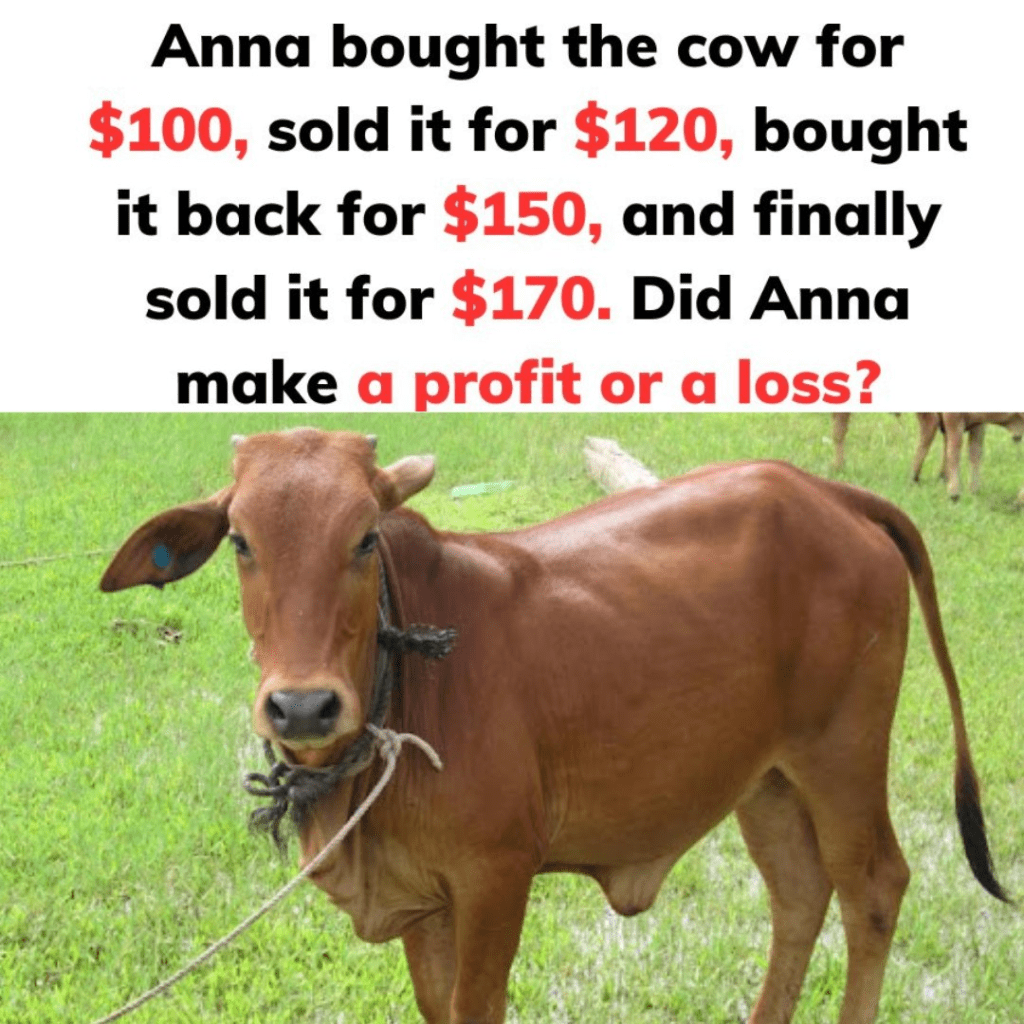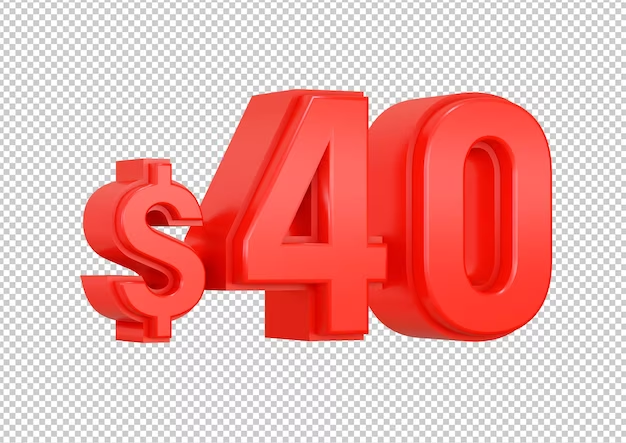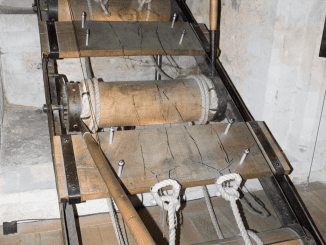Puzzles like this often spark debate and confusion. If you’re reading this, you likely enjoy unraveling tricky scenarios or have stumbled upon this puzzle to test your problem-solving skills. Here’s the challenge: Anna buys a cow, sells it, buys it back, and sells it again. But did she make a profit or face a loss in the end?
Before you jump to conclusions, grab a piece of paper or mentally note down the transactions as you read. At first glance, it seems like a simple math problem. But as with many puzzles, it’s easy to get tripped up. Let’s break it down step by step and analyze each transaction to determine if Anna made a profit or a loss. Ready? Let’s dive in!

Common Mistakes in Solving the Puzzle
Many people get confused by this puzzle. It’s not because the math is complicated, but because the sequence of transactions can be misleading. Here are some common mistakes:
- Focusing Solely on Total Sales: Some people add up the total amount Anna received and compare it to her total spending, without considering the net balance after each transaction.
- Overlooking Transaction Sequence: Since Anna buys and sells the cow twice, the order of these transactions is crucial.
- Confusing Revenue with Profit: Just because Anna received more money than the initial cost doesn’t mean she made a profit. Profit is about net gain, not just total earnings.
With these pitfalls in mind, let’s analyze each step of Anna’s transactions to uncover whether she truly made a profit or loss.
Step-by-Step Breakdown of Anna’s Transactions
Step 1: Initial Purchase of the Cow
Anna begins by buying the cow for $100. This is her initial expense, putting her in a negative balance.
- Total Balance: -$100
Step 2: Selling the Cow
Anna then sells the cow for $120. This means she earns $20 more than she initially paid, creating her first profit.
- Calculation: $120 (revenue) – $100 (initial cost) = +$20 net profit
- Total Balance: +$20
At this stage, Anna has a profit of $20. However, there are still two transactions left.
Step 3: Buying the Cow Back
Anna buys the cow again, this time paying $150. This expense reduces her overall balance significantly.
- Calculation: -$150 (buying back the cow)
- Total Balance: +$20 (previous profit) – $150 = -$130
Now, Anna is in a loss of $130 after repurchasing the cow.
Step 4: Final Sale of the Cow
Finally, Anna sells the cow once more, this time for $170. This brings in additional revenue.
- Calculation: +$170 (final sale)
- Total Balance: -$130 (previous balance) + $170 = +$40
After the final transaction, Anna’s total balance is +$40. This means she ends up making a profit of $40 after all transactions.

Did Anna Make a Profit? Yes, She Did!
So, there you have it! After all four transactions, Anna made a net profit of $40. Despite the back-and-forth nature of the buying and selling, her overall financial position improved.
Why the Puzzle Is So Tricky
The puzzle is deceptively simple, but it can confuse even the sharpest minds because of its layered transactions. Here’s why it’s tricky:
- The Back-and-Forth Buying: Anna’s decision to buy and sell the cow twice makes it harder to see the overall balance. Each transaction affects the net profit or loss differently, so it’s crucial to evaluate each step.
- Profit vs. Revenue Confusion: Many assume that selling the cow for more than the initial cost means automatic profit. However, profit is the total earnings minus total costs, not just the higher sale price.
- The Illusion of Bigger Numbers: Seeing larger sales numbers (like the final $170 sale) can create the illusion of a big profit. But without subtracting the costs, it’s impossible to determine the true profit or loss.
How to Approach Similar Puzzles
Puzzles like this one are all about understanding net gains and losses. Here are some tips to approach similar challenges:
- Write Down Each Transaction: Breaking down each step clearly helps you see the net balance after every action.
- Separate Profit from Revenue: Focus on the net change in the balance, not just the sales amounts.
- Use Simple Math: Avoid overcomplicating the calculations. Stick to basic addition and subtraction to keep track of gains and losses.
- Think Step-by-Step: Tackle each transaction as its own mini problem. Don’t jump to conclusions until you’ve accounted for every step.
The Takeaway: A Lesson in Problem-Solving
This puzzle is more than just a math problem—it’s a lesson in logical thinking. It emphasizes the importance of analyzing every detail before reaching a conclusion. Anna’s journey of buying and selling the cow twice is a great example of how financial decisions can be deceiving without a thorough evaluation.
Conclusion: Keep Your Problem-Solving Sharp!
Anna’s cow puzzle serves as a reminder that clear thinking and step-by-step analysis are key in understanding complex problems. By breaking down each transaction and focusing on net profit rather than just sales, you can uncover the real outcome. Anna did make a profit, and it totaled $40.
If you enjoyed this puzzle, try tackling similar challenges to keep your problem-solving skills sharp. Puzzles like these are not only entertaining but also great for sharpening your analytical thinking.


